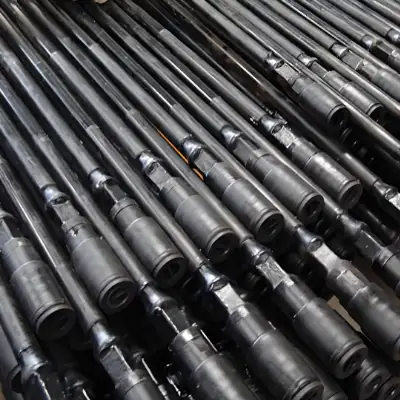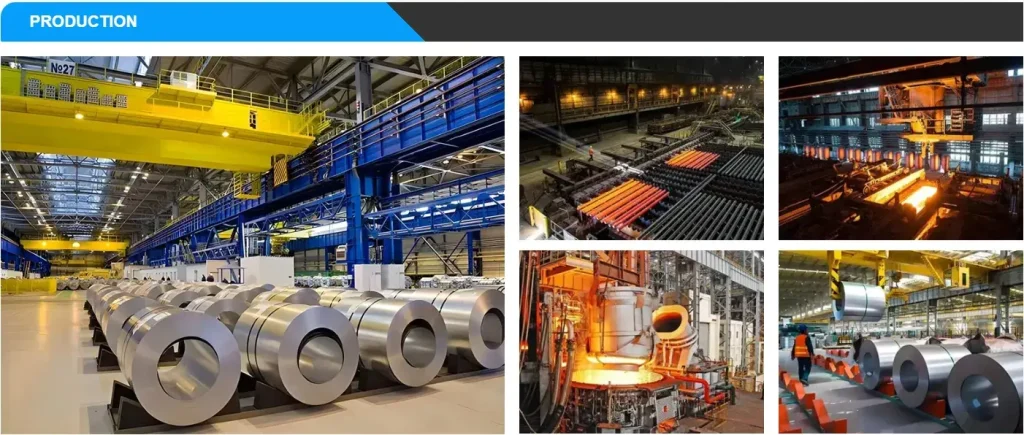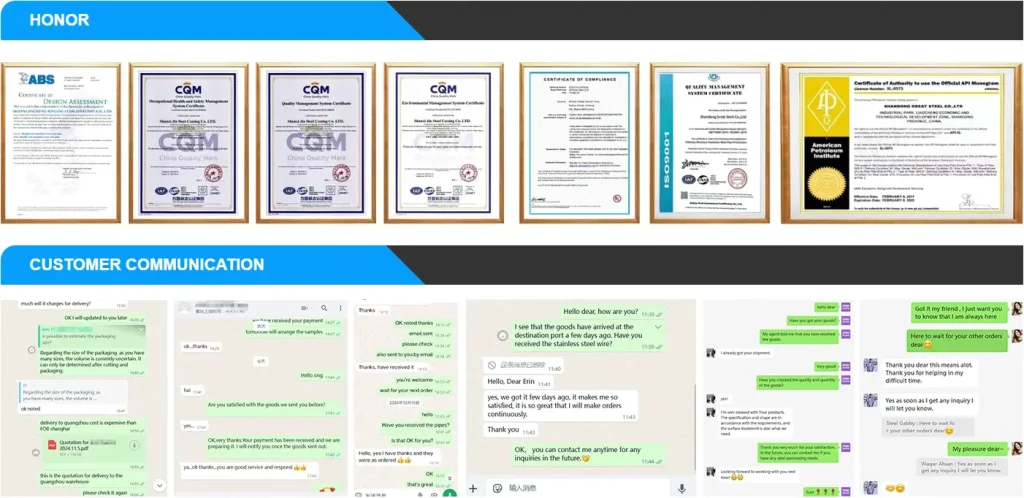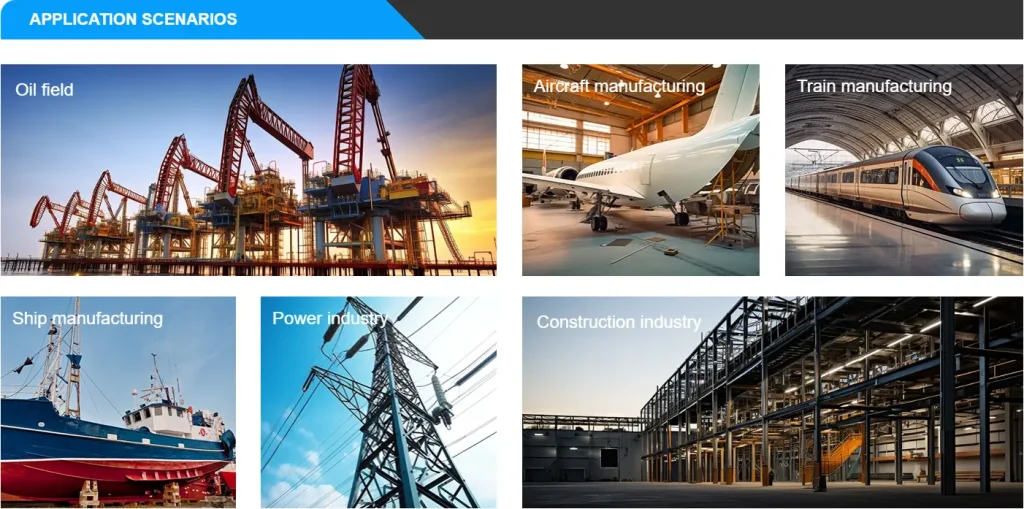We supply premium API 11B sucker rods designed to withstand high cyclic loads and corrosive downhole environments. Our rods deliver extended service life, minimal axial deformation, and exceptional compatibility with pumping motors, reducing maintenance downtime and boosting oil production efficiency.
1. Introduction to API 11B Sucker Rods
Under the API 11B standard, sucker rods are engineered as critical downhole components that transmit surface mechanical energy to subsurface pumps. We ensure strict adherence to API’s material and dimensional requirements, guaranteeing interchangeability across global pumping operations.
2. Material Grades and Mechanical Properties
- Carbon Steel (AISI 1045/1055): High tensile strength, suitable for conventional depths.
- Alloy Steel (4140 HT): Enhanced fatigue resistance, ideal for deep wells.
- Corrosion-Resistant Alloys: Special coatings and alloying for H₂S environments complying with NACE MR0175.
3. Rod Types and End Connections
We offer:
- Standard Rods: Plain ends machined to API 11B dimensions.
- Upset Rods: Threaded ends with weld-upset for minimized joint stress.
- Insulated Rods: Non-conductive couplings to prevent electrical corrosion.
4. Design Features and Fatigue Management
Our rods incorporate:
- Stress-Relief Heat Treatment: Lowers residual stresses, extending fatigue life.
- Shot-Peened Surface Finishes: Improves crack resistance under cyclic loads.
- Precision Thread Profile: Ensures uniform load distribution across couplings.
5. Dimensional and Quality Requirements
API 11B specifies lengths (10–40 ft), diameters (0.437″–1.125″), thread gauges, and tolerances. We execute:
- Thread Inspection: Per ANSI B1.1 standards.
- Straightness Checks: Laser alignment to ±0.002″ per foot.
6. Corrosion Control and Coatings
In corrosive media, we apply:
- Epoxy Coatings: 8–12 mils for barrier protection.
- Plasma Nitriding: Surface hardening without dimensional growth.
7. Surface Treatment and Inspection
- Magnetic Particle Testing (MPT): Detects subsurface flaws.
- Ultrasonic Thickness Measurement: Verifies coating uniformity.
- Visual and Dimensional Audits: 100% inspection before dispatch.
8. Installation Best Practices
- Rod String Alignment: On-site guides to avoid buckling.
- Coupling Torque Control: Calibrated wrenches to API-recommended values.
- Lubrication Schedule: Grease grades per API RP 11S5.
9. Maintenance and Failure Analysis
Routine checks include:
- Rod Tally Monitoring: Track lengths and joins.
- Visual Wear Patterns: Identify corrosion grooves and fatigue cracks.
- Laboratory Fractography: Root-cause analysis on failed samples.
10. Performance in Extreme Conditions
We test rods under:
- High-Temperature Wells: Up to 350°F continuous service.
- Deep-Water Applications: Up to 8,000 psi external pressure.
11. Oman Procurement Case Study
In 2023, Petroleum Development Oman ordered 5,000 ft of 4140 HT upset rods for a 12,000 ft deep onshore well. We delivered within 10 weeks, complete with MPT and certificate pack. The operator reported a 30% reduction in rod replacements over six months.
12. Environmental and Safety Compliance
Our rods meet:
- ISO 14001: Environmental management.
- API RP 11S5: Recommended practices for sucker rod maintenance.
- OSHA 1910: Safe handling and lifting procedures.
13. Comparative Advantages
| Feature | Our Sucker Rods | Typical Competitor |
|---|---|---|
| Fatigue Life | > 150 million cycles | ~100 million cycles |
| Corrosion Resistance | NACE MR0175 compliant | Limited coating options |
| Delivery Lead Time | 8–10 weeks | 12–16 weeks |
| Quality Documentation | Full traceability | Partial certificates |
14. Integration with Pumping Systems
We collaborate with OEMs to ensure rod-pump matching, optimizing stroke length and load profiles for beam, rod, and progressive cavity pumps.
15. FAQs
1. How do I choose between standard and upset rods?
We recommend upset rods in deeper wells or high-load scenarios due to enhanced joint strength.
2. Can these rods operate in sour gas wells?
Yes. Combined with NACE-compliant alloys and insulating couplings, our rods resist sulfide cracking.
3. What inspection reports are provided?
We supply MPT, UT, dimensional reports, and mill test certificates per EN 10204 3.1.
4. How often should rod strings be overhauled?
Inspection intervals depend on load cycles; typically every 6–12 months for conventional wells.
5. Do you offer on-site coupling services?
Our global network provides torque and alignment services to ensure optimal installation.







